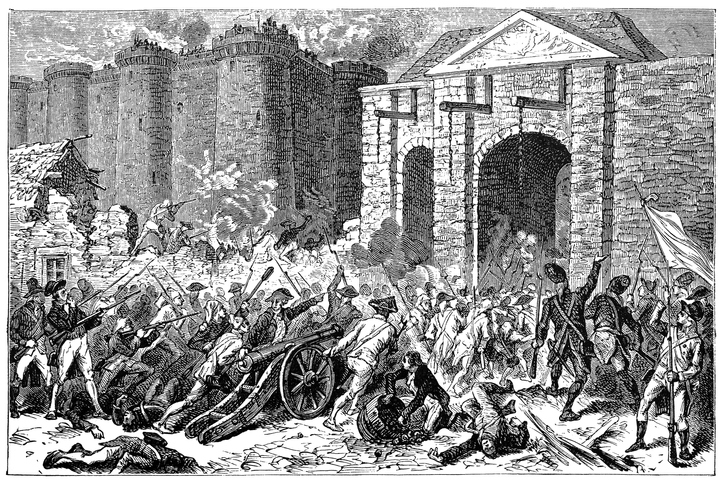This month in history: Storming of the Bastille
On 14 July 1789, French revolutionaries in Paris stormed the Bastille, a royal fortress and prison. As part of our ‘This month in history’ series, we look at the storming of the Bastille, as described in The Gazette.

What is Bastille Day?
Celebrated on 14 July each year, Bastille Day is the name given by English-speaking countries to the national day of France. It marks the anniversary of the storming of the Bastille on 14 July 1789, an event which signalled the beginning of the French Revolution.
What was the Bastille?
The Bastille was a fortress in Paris which was built in the late 1300s to protect the city from English attacks during the Hundred Years' War. By the late 1700s, the Bastille was primarily used as a state prison by French monarchs.
Who stormed the Bastille?
By the summer of 1789, King Louis XVI’s France was heading towards revolution. The country was facing an economic crisis, with the king unable to raise more taxes when the Estates-General convened to address the issue in May 1789. The Estates-General was a general assembly which represented the estates of France:
- the clergy (First Estate)
- the nobility (Second Estate)
- the commoners (Third Estate)
The Third Estate, which made up between 96 to 98 per cent of the population, became increasingly ready for revolution, demanding more of a say in the running of the country. And following the dismissal of Louis XVI’s Finance Minister, Jacques Necker (who had been sympathetic to the Third Estate), on 11 July 1789, Parisians presumed the king was preparing the French army for an attack.
In order to defend themselves, on the morning of 14 July 1789, around 1,000 revolutionaries of the Third Estate stormed the Hôtel des Invalides where they gathered weapons. However, two days previous royal authorities had transferred 250 barrels of gunpowder to the Bastille.
How was the storming of Bastille described in The Gazette?
The events of the storming Bastille were described in an edition of The Gazette published on Saturday 18 July 1789 (Gazette issue 13115).
According to The Gazette, on 14 July 1789, “[a] general Consternation prevailed throughout the Town. All the Shops were shut; all public and private Employments at a Stand, and scarcely a Person to be seen in the Streets, except the armed Burghers, who acted as a temporary Police for the Protection of private Property, to replace the established one, which had no longer any influence.”
Following the storming of the Hôtel des Invalides, “a Detachment with Two Pieces of Cannon” went to the Bastille “to demand the Ammunition deposited there.” The military leader of the Bastille, Governor de Launay, refused. According to The Gazette, though a “Flag of Truce” had been sent, “the Governor (the Marquis de Launay) ordered the Guard to fire, and several were killed.” The revolutionaries then “rushed forward to the Assault, when the Governor agreed to admit a certain Number, on Condition that they should not commit any Violence.”
As negotiations dragged out, the crowd grew impatient. They then broke into the Bastille courtyard and began trying to break into the main fortress. Fighting soon broke out, with many of the soldiers who were defending the Bastille turning on de Launay and joining the crowd. de Launay “and the Fortress surrendered” and the revolutionaries took control of the Bastille and its gunpowder and cannons. The seven prisoners being held at the Bastille were also freed.
De Launay, “the principal Gunner, the Jailer, and Two old Invalids, who had been noticed as being more active than the Rest” were captured and “carried before the Council assembled at the Hotel de Ville” where “Marquis de Launay was sentenced to be beheaded […] and the other Prisoners were also put to Death.”
Aftermath
News of the capture of the Bastille quickly spread throughout France and symbolically marked the beginning of the French Revolution. Events would span a decade and eventually result in the abolition of the monarchy. King Louis XVI and his wife Marie Antoinette were executed for treason by guillotine in 1793.
See also
This month in history: Samuel Sharpe and the Christmas Rebellion
This month in history: American Declaration of Independence
Image: Getty Images
Publication date: 13 July 2021
Any opinion expressed in this article is that of the author and the author alone, and does not necessarily represent that of The Gazette.
